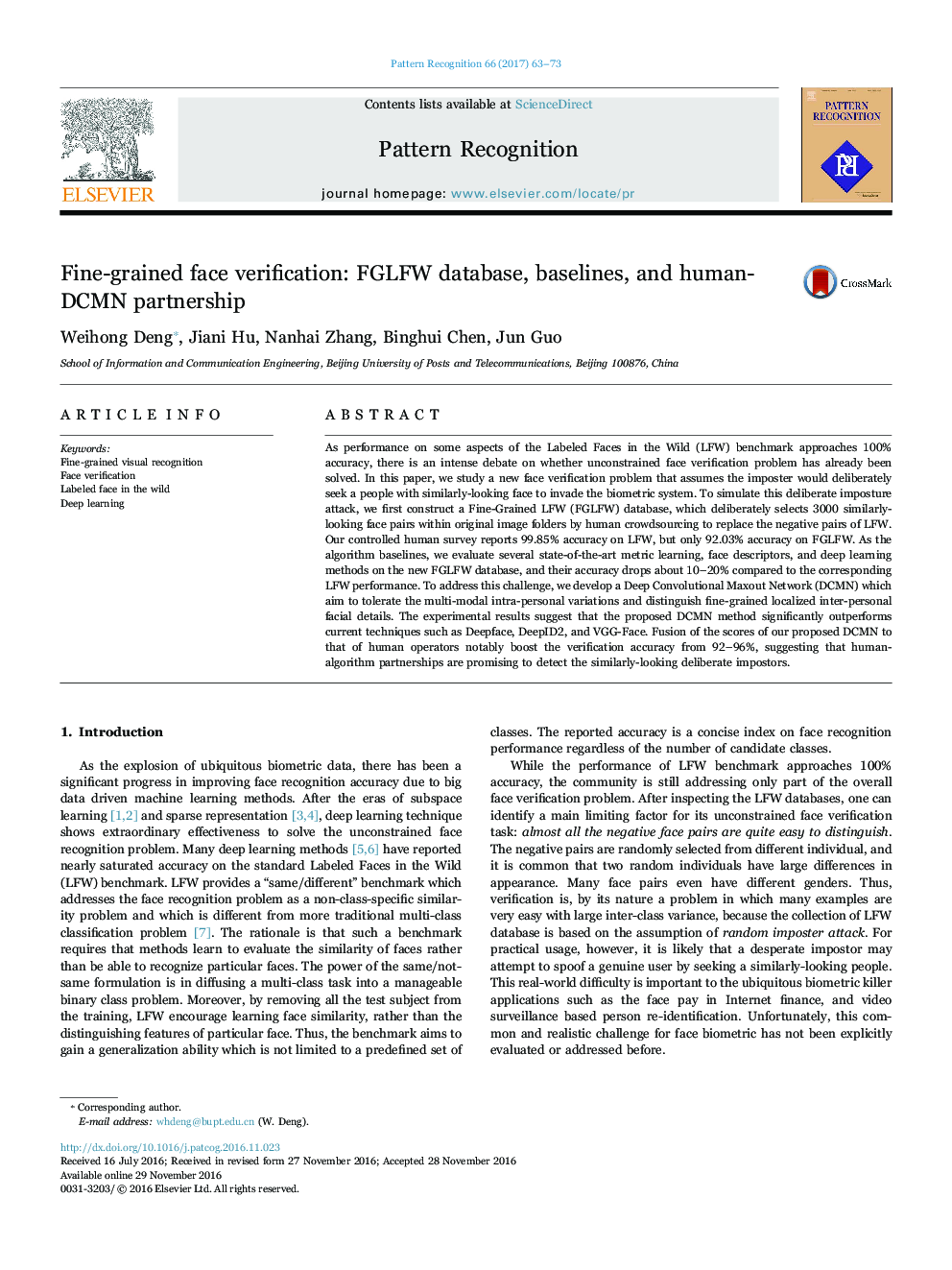| Article ID | Journal | Published Year | Pages | File Type |
|---|---|---|---|---|
| 4969704 | Pattern Recognition | 2017 | 11 Pages |
â¢New fine-grained face verification task to detect the imposter who deliberately seek a people with similarly-looking face.â¢Fine-Grained LFW (FGLFW) database that evaluates the new fine-grained face verification task.â¢Controlled human survey reports 99.85% accuracy on LFW, but only 92.03% accuracy on FGLFW.â¢Deep Convolutional Maxout Network (DCMN) that outperforms current techniques such as Deepface, DeepID2, and VGG-Face on LFW and FGLFW experiments.â¢The finding that human and DCMN are highly complementary on the fine-grained face verification task.
As performance on some aspects of the Labeled Faces in the Wild (LFW) benchmark approaches 100% accuracy, there is an intense debate on whether unconstrained face verification problem has already been solved. In this paper, we study a new face verification problem that assumes the imposter would deliberately seek a people with similarly-looking face to invade the biometric system. To simulate this deliberate imposture attack, we first construct a Fine-Grained LFW (FGLFW) database, which deliberately selects 3000 similarly-looking face pairs within original image folders by human crowdsourcing to replace the negative pairs of LFW. Our controlled human survey reports 99.85% accuracy on LFW, but only 92.03% accuracy on FGLFW. As the algorithm baselines, we evaluate several state-of-the-art metric learning, face descriptors, and deep learning methods on the new FGLFW database, and their accuracy drops about 10-20% compared to the corresponding LFW performance. To address this challenge, we develop a Deep Convolutional Maxout Network (DCMN) which aim to tolerate the multi-modal intra-personal variations and distinguish fine-grained localized inter-personal facial details. The experimental results suggest that the proposed DCMN method significantly outperforms current techniques such as Deepface, DeepID2, and VGG-Face. Fusion of the scores of our proposed DCMN to that of human operators notably boost the verification accuracy from 92-96%, suggesting that human-algorithm partnerships are promising to detect the similarly-looking deliberate impostors.
